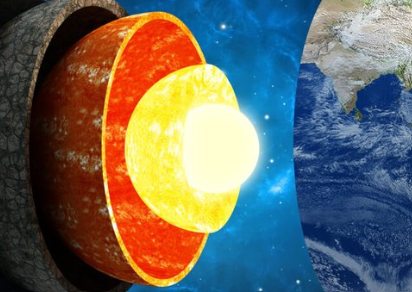If the trend continues and is proven true, our days may soon grow to over 24 hours. But the time involved may very well thousands of years. This is nothing to get worried over.
Recent research has uncovered that Earth’s inner core, a moon-sized sphere of solid iron and nickel located over 3,000 miles beneath the surface, has been experiencing an unusually slow rotation for the past 14 years. This deceleration could potentially extend the length of Earth’s days, although the change would likely be too subtle for humans to notice.
The inner core of Earth is encased by the outer core, a scorching layer of molten metals, and the mantle, a more solid region of molten rock. While the entire planet rotates, the inner core can spin at a different speed than the mantle and crust due to the outer core’s viscosity.
Earth’s Inner Core Rotation Slows Down! What does it mean?https://t.co/OfIjTJf7U5#EarthScience #InnerCore #Geology #PlanetEarth #ScientificDiscovery #worldnews #dailynews #newsupdate #newstoday #newsfeed pic.twitter.com/6FIW8GlQl7
— Econopass™ (@econopass) June 21, 2024
Over the past 40 years, scientists have been mapping Earth’s inner layers using detailed seismic activity records. During this time, the inner core was found to be rotating slightly faster than the mantle and crust. However, a new study published in Nature on June 12 indicates that since 2010, the inner core’s rotation has been slowing down, now rotating more slowly than the planet’s outer layers.
“When I first observed the seismograms indicating this shift, I was puzzled,” said John Vidale, a seismologist at the University of Southern California. “But after identifying over two dozen more findings revealing an identical structure, the conclusion was obvious.”
If the inner core’s rotation continues to slow, its gravitational influence could eventually cause the outer layers of Earth to spin more slowly, potentially altering the length of our days. However, any change would be on the scale of thousandths of a second, making it “very hard to notice,” according to Vidale. Thus, there would likely be no need to adjust clocks or calendars, especially if the change is temporary.
New Post: The Earth’s inner core slows down. It could ‘change the length of a day | WION Originals https://t.co/tNn4n5yML9 pic.twitter.com/7N9ZDvIKd9
— Vintage Clips (@zavintageclip) June 20, 2024
This is not the initial time that scientists have made the argument that the core of the Earth is slowing down, a process known as “backtracking.” This theory has been argued for nearly a decade but is difficult to substantiate.
In the recent study, researchers examined data from over 100 repeating earthquakes along a tectonic plate boundary in the South Sandwich Islands from 1991 to 2023. These seismic events enabled researchers to follow the core’s orientation relative to the mantle, indicating variations in the innermost core’s rotational rate as time passed.
The study offers the “most convincing” evidence so far that backtracking has been occurring, Vidale noted. The reasons behind the inner core’s backtracking remain unclear, but potential causes include the turbulent motion of the liquid iron outer core or gravitational pulls from dense regions of the rocky mantle.
Earth’s inner core rotation slows down and reverses direction. What does this mean for the planet? https://t.co/AccQBeIAHc
— 7SealsOfTheEnd (@7SealsAtTheEnd) June 14, 2024
Longer data sets are required to understand the frequency and long-term patterns of these changes. The inner core remains one of Earth’s most enigmatic layers, but advancements in technology are helping researchers to learn more about its dynamics.
“The movement of the inner core might be even more dynamic than we currently understand,” Vidale said. The study’s authors will continue to analyze seismic data to further understand the inner core’s behavior and its implications for our planet.
Key Points:
i. New Findings: Research has shown that Earth’s inner core, composed of solid iron and nickel, has been spinning unusually slowly for the past 14 years.
ii. Potential Impact: This slowdown might slightly lengthen Earth’s days, though any changes would be imperceptible to humans, altering the day length by thousandths of a second.
iii. Inner Core Dynamics: The inner core can spin at a different speed than the mantle and crust due to the viscosity of the outer core, a superhot layer of molten metals.
iv. Historical Context: The concept of the inner core slowing down, known as “backtracking,” has been debated for about a decade but is now supported by the most convincing evidence to date.
v. Future Research: Scientists plan to continue analyzing seismic data to understand the long-term trends and causes of these changes, aiming to uncover more about the inner core’s dynamics.
RM Tomi – Reprinted with permission of Whatfinger News



